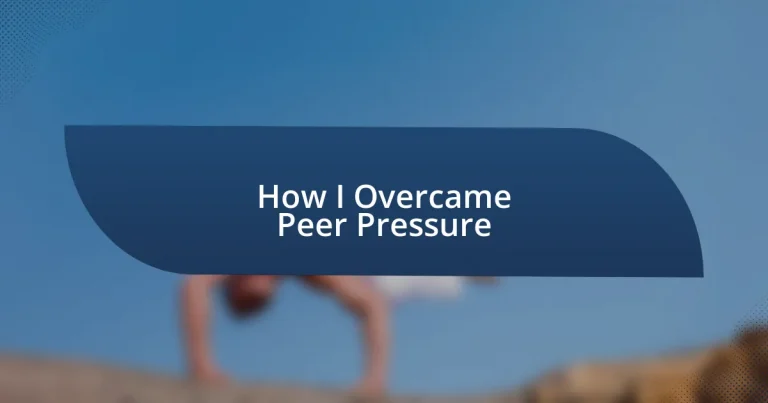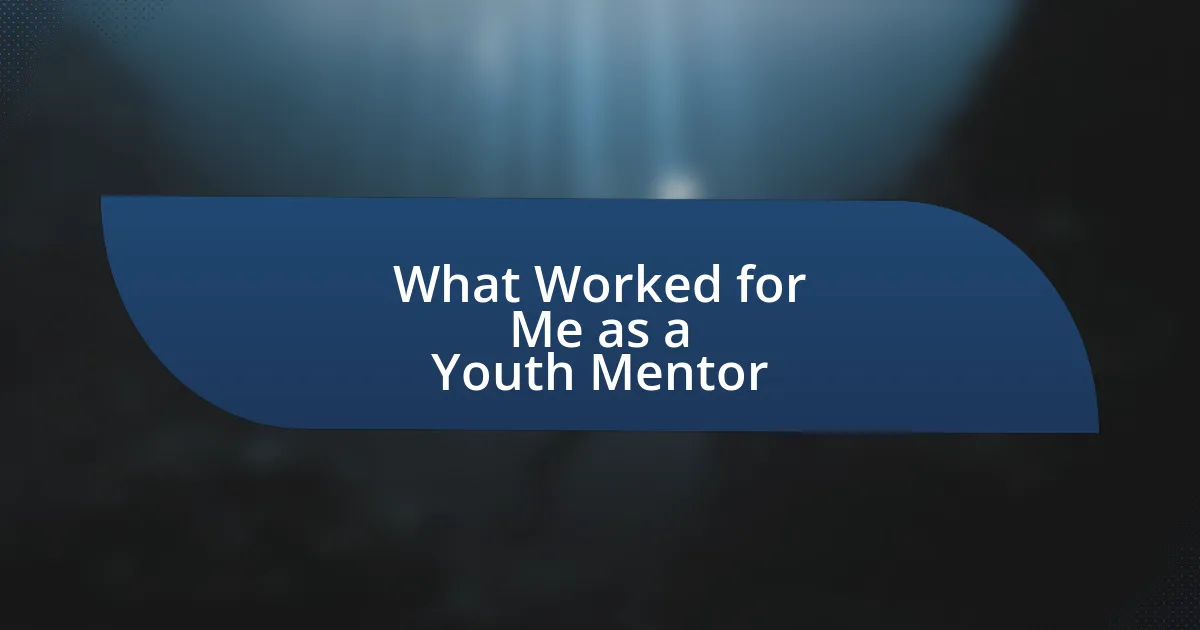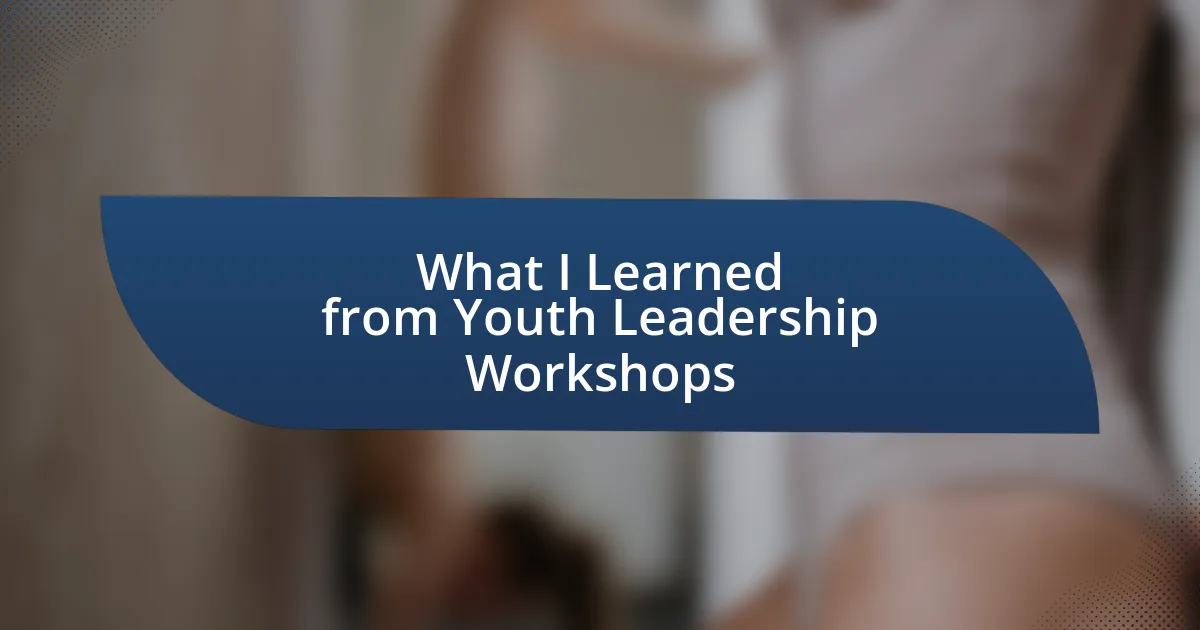Key takeaways:
- Peer pressure stems from the human need for belonging, often causing internal conflict between personal values and external expectations.
- Identifying personal triggers, such as uncomfortable social situations, is essential for managing peer pressure and building self-awareness.
- Developing assertiveness skills, like practicing refusal techniques and using “I” statements, empowers individuals to effectively resist peer pressure.
- Creating a support network of like-minded individuals strengthens accountability and reinforces personal values, aiding in overcoming peer pressure.
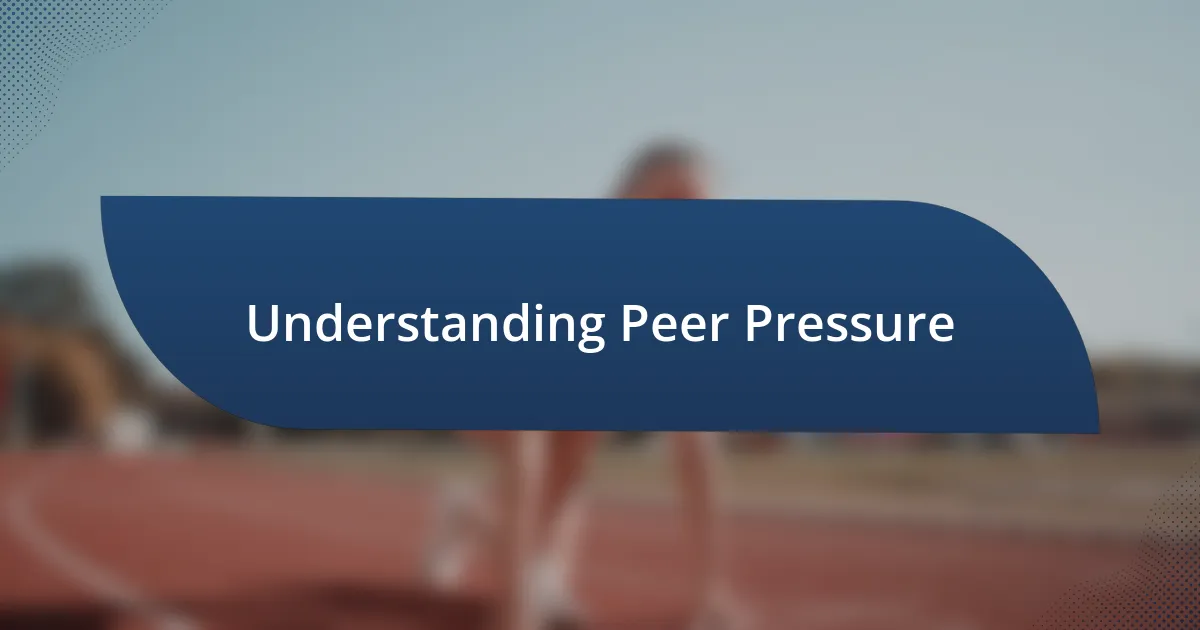
Understanding Peer Pressure
Peer pressure often feels like an invisible force pushing us toward choices we may not want to make. I remember a time in high school when a group of friends pressured me to skip class. It filled me with anxiety: Should I go along to fit in, or stand firm without their support? It was a moment that made me realize how strong this influence could be, often blurring the lines between our desires and the expectations of those around us.
At its core, peer pressure stems from a deep human need for belonging and acceptance. I found myself questioning the values I thought I held dear. Have you ever felt that conflict between wanting to be liked and staying true to yourself? It can be emotionally exhausting, and it’s easy to lose sight of who we really are amidst the noise of others’ opinions.
Understanding peer pressure requires recognizing its power and impact on our choices. I’ve learned to reflect on my values in such moments, asking myself what truly matters to me. This self-awareness can be transformative, helping to build resilience against the pull of those around us. Isn’t it interesting how simply pausing to think can empower us to make decisions that align with our own beliefs instead of others’ expectations?
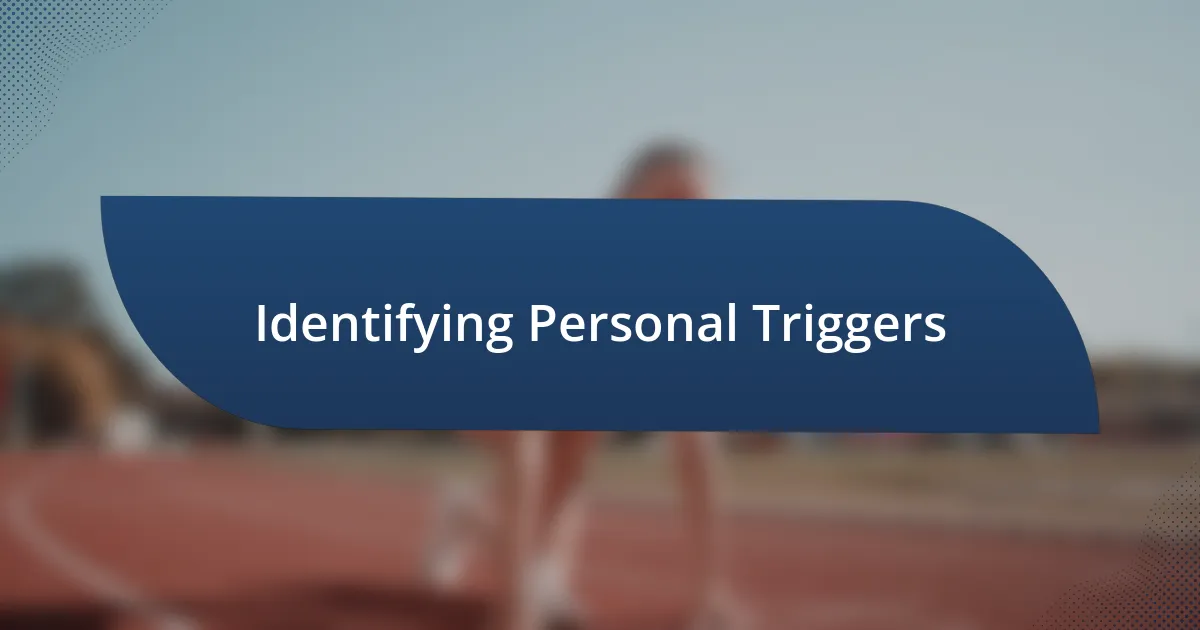
Identifying Personal Triggers
Identifying personal triggers is essential in navigating peer pressure. I vividly remember a time when I was around friends who loved to party. Each time they invited me, I felt a knot tightening in my stomach. This was a clear trigger that made me question my personal values and comfort levels. Recognizing this helped me understand that certain environments could easily sway my decisions.
It’s fascinating how small changes in my surroundings can trigger specific feelings. For instance, being around friends who were frequently engaging in risky behavior made me more susceptible to temptation. I learned to take note of when I felt uncomfortable or anxious. This awareness allowed me to either mentally prepare myself or outright avoid those social situations that could push me beyond my limits.
Ultimately, identifying personal triggers means taking the time to understand oneself. I began journaling my feelings after social gatherings, which helped highlight patterns in my reactions. This simple exercise not only deepened my self-awareness but also equipped me with the necessary tools to resist peer pressure effectively.
| Situation | Emotional Response |
|---|---|
| Partying with friends | Anxiety and discomfort |
| Risky behavior around peers | Increased temptation to conform |
| Journaling experiences | Heightened self-awareness |
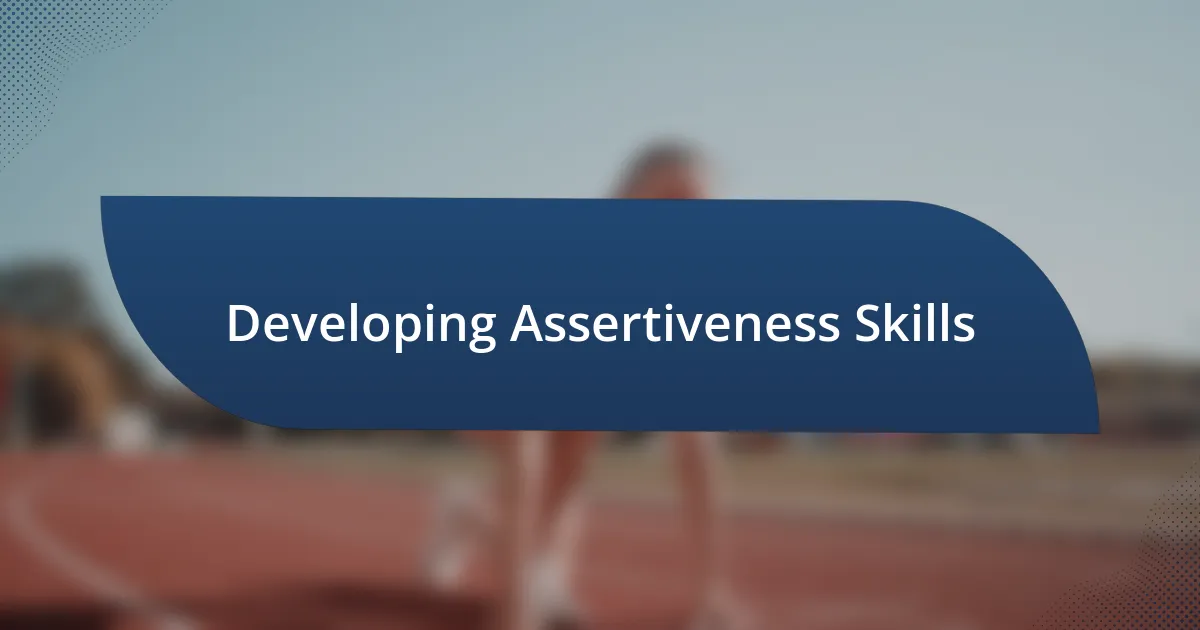
Developing Assertiveness Skills
Developing assertiveness skills has been a transformative journey for me. I remember a particular moment when my friends pressured me to skip class for a day at the beach. Instead of giving in, I stood my ground and expressed my reasons for wanting to stick to my studies. This experience taught me that being assertive doesn’t mean being confrontational; it’s about clearly communicating my needs and boundaries.
To cultivate assertiveness, I found the following strategies particularly effective:
- Practice saying no: I started with small scenarios, like turning down extra assignments that piled on after work.
- Use “I” statements: For example, “I feel uncomfortable when…” helped me express my feelings without sounding accusatory.
- Role-play with friends: This simulated scenarios prepared me for real-life challenges, boosting my confidence.
- Maintain eye contact: I noticed that looking someone in the eye while speaking made me feel more credible and worthy of respect.
- Focus on body language: I learned to keep open and relaxed posture, which not only conveyed my assertiveness but also calmed my nerves.
By actively implementing these strategies, I discovered that assertiveness became a natural part of my interactions, empowering me to resist peer pressure gracefully and firmly.
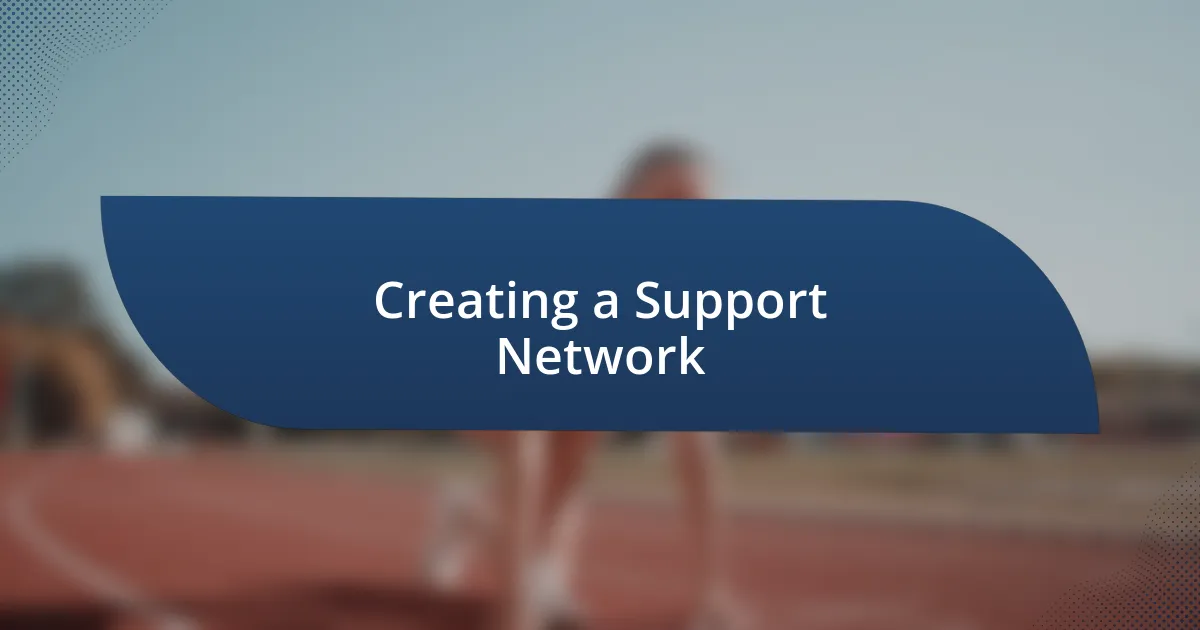
Creating a Support Network
Creating a support network was a game-changer for me in overcoming peer pressure. I found strength in surrounding myself with friends who shared similar values and goals. For instance, when I was tempted to indulge in a risky situation, I could easily reach out to my closest friend, who would remind me of our shared commitments and aspirations. Doesn’t having that accountability make a huge difference in our decisions?
I also discovered the importance of diversifying my support circle. It wasn’t just about leaning on my good friends; I started engaging with mentors and joining community groups that aligned with my interests. I remember attending a workshop where I met like-minded individuals who were also navigating the pressures of life. Their stories and support helped me realize that I’m not alone in facing these challenges. Have you ever felt that sense of belonging? It truly empowers you.
Finally, I learned to nurture these connections through open communication. Regularly checking in with friends about our experiences made us all feel included and valued. I recall having weekly catch-ups where we would share our struggles and celebrate our victories. This routine created a strong bond that reinforced our individual commitments to resist peer pressure. Creating a support network isn’t just beneficial; it’s vital for personal growth and resilience.
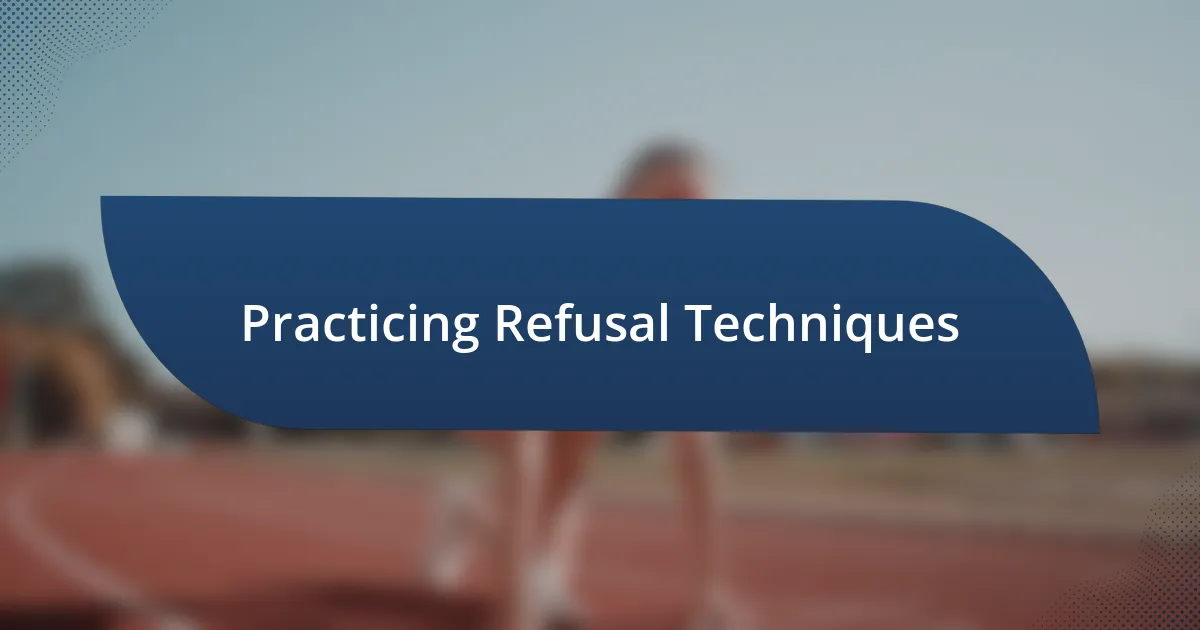
Practicing Refusal Techniques
Developing refusal techniques was crucial in building my confidence against peer pressure. I often practiced saying “no” in front of a mirror, defining my stance on various issues. It might sound silly, but there’s something empowering about hearing your own voice assertively reject a suggestion. Have you ever tried it? It feels surprisingly liberating.
I remember a time when friends pressured me to join a reckless activity I knew was wrong. Drawing from my practice, I calmly explained my reasons and suggested an alternative that aligned with my values. Surprisingly, some of them actually supported my decision after our conversation. It taught me that standing firm doesn’t just reinforce my choices; it can influence others positively too.
Role-playing scenarios with supportive friends also played a massive role in refining my refusal techniques. We would simulate situations where pressure might arise, allowing me to respond naturally when it really mattered. The comfort in these exercises helped reduce my anxiety, transforming potential conflict into opportunities for dialogue. How do you usually feel in those moments? Being prepared truly made a difference for me, turning uncertainty into assurance.
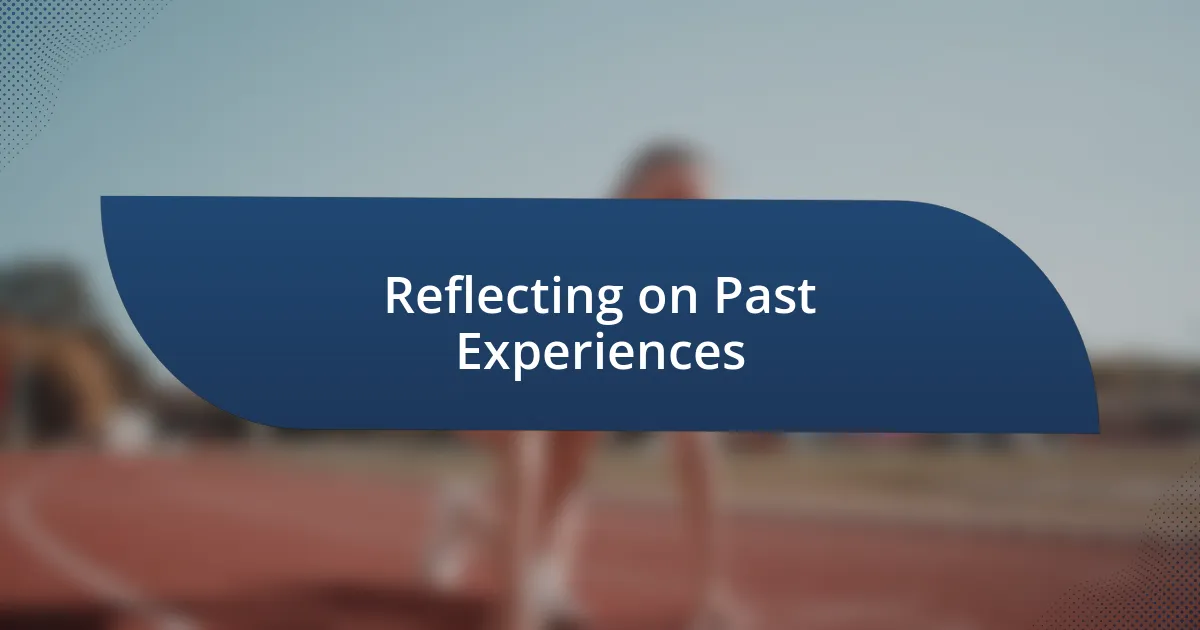
Reflecting on Past Experiences
Reflecting on past experiences helps me understand how I’ve grown through moments of peer pressure. I remember being in high school, surrounded by friends who constantly sought thrills. Looking back, I realized that some of the most pivotal moments came when I chose to listen to my own instincts rather than the cacophony of influences around me. Have you ever felt that internal tug-of-war? It’s a powerful turning point when you realize your values matter more than fitting in.
One specific experience comes to mind when my group decided to skip class for what they called a “spontaneous adventure.” I hesitated, knowing the repercussions could lead to trouble. In that moment, I recalled the weight of my own aspirations and academic goals. It was a defining choice for me. I chose to stay behind, and while it felt isolating, that decision ultimately strengthened my sense of self. How often do we sacrifice our goals to please others?
These reflections show me that each time I stood firm, I not only reinforced my own beliefs but also encouraged those around me to think critically about their choices. I found that vulnerability in sharing my thoughts sparked deeper connections with my peers. It’s fascinating how honesty can shift dynamics, isn’t it? Through these moments, I grew more authentic, learning that the strength to resist pressure often lies in the clarity of self-awareness.
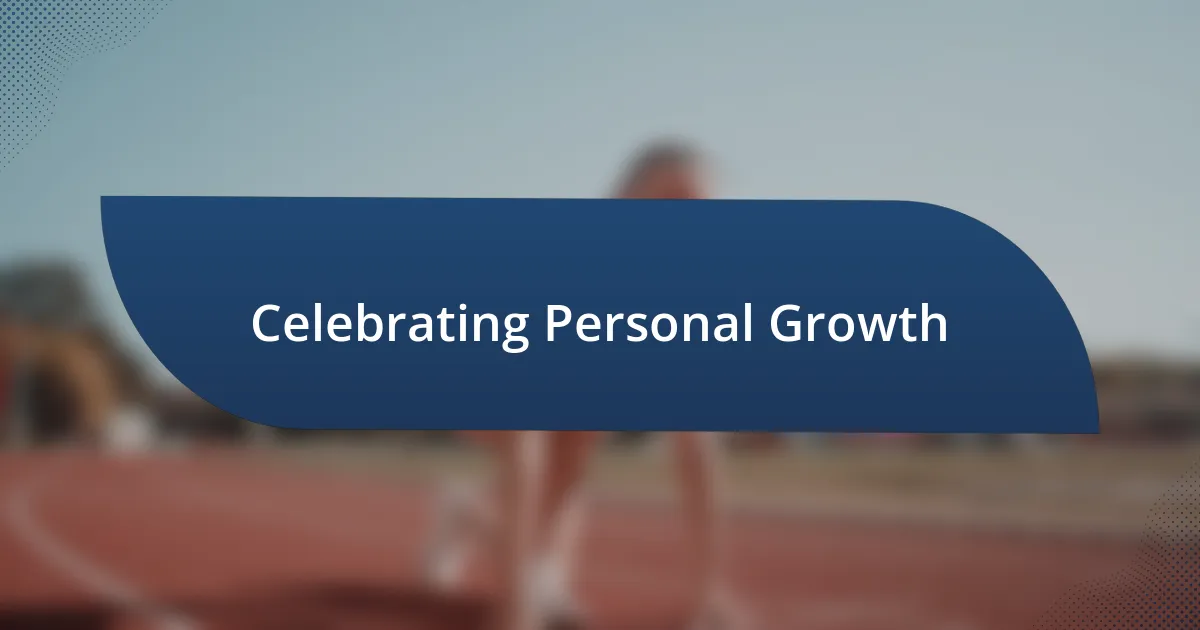
Celebrating Personal Growth
Celebrating personal growth is about acknowledging those small victories that often go unnoticed. I remember the first time I confidently spoke up in a group setting about my discomfort regarding a risky decision. The moment felt electric, a blend of fear and exhilaration, but it was a true testament to my growth. Have you ever experienced that rush when you realize your voice matters?
It’s in those seemingly mundane moments that I learned to appreciate my progress. For instance, during a group project, I chose to advocate for a more cautious approach rather than going along with the majority. The discomfort didn’t vanish, but the pride I felt afterward was monumental. Each choice built upon the last, allowing me to celebrate not just the acts of resistance but the courage it took to follow my convictions.
As I look back now, every step forward fuels my motivation to continue this journey of self-discovery. I often think about how valuable it is to embrace our individuality, despite what the crowd might say. Isn’t it remarkable how personal growth can transform us into more resilient versions of ourselves?
